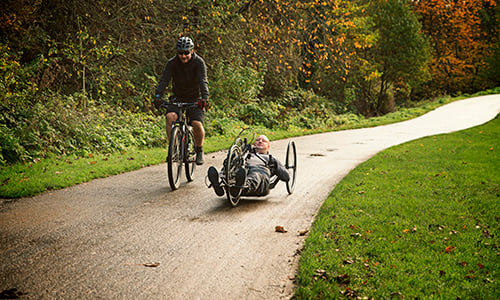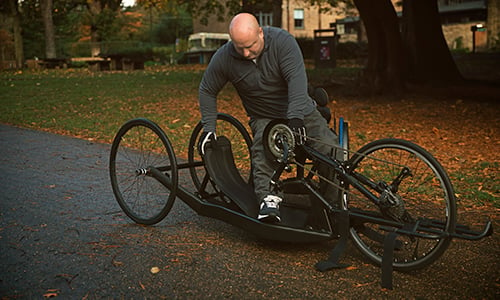There are unique obstacles to exercise after a spinal cord injury, but it's vital to stay active. With a little motivation, staying fit can be easier and more fun than you may think.
In the months following your spinal cord injury, you became accustomed to doing things differently and following new routines. Of course, certain aspects of your new lifestyle have presented unique challenges. For many people after a spinal cord injury, it isn't easy to stay active and exercise regularly.
However, as formidable as the barriers to staying active may be, the stakes are high. Without physical activity and a consistent exercise program, you become vulnerable to a host of physical issues. A sedentary lifestyle in a wheelchair can result in increased body weight, pressure injuries, reduced upper body strength, decreased mobility, and several serious medical conditions.
The good news is that you can stay active and healthy without a great effort. Additionally, once you hit your stride, you'll reap some major benefits from exercise and improve the quality of your life. Who knows…you may actually enjoy working up a good sweat!
Tips to help you stay active with a spinal cord injury
Ready to begin exercising? Here are a few tips to get you started:
· Start Small: You can stay active without spending a lot of time or doing highly strenuous exercises. Start easy and slow as your body becomes accustomed to the stress of exercise. For instance, you can take a 5-10 minute roll around the block in your manual wheelchair, gradually increasing your trips every week
· Add intervals: Interval training gives you more bang for your fitness buck. These are short bursts of strenuous activity. Intervals can be quick sprints in a manual wheelchair during your daily errands or rolls around the neighborhood. You also can participate in wheelchair tennis or basketball, which inherently requires intense bursts of effort
· Try a home workout: Working out from home is an easy way to stay active, with inspiration and guidance just a click away. Adapt to Perform is a YouTube channel run by U.K.-based Ben Clarke, a C7 quad. Most of these home workout videos can be done without any specialized equipment or training
· Try yoga: If you've never tried yoga before, it's an ideal way to stay active and reduce mental and emotional stress too. Check out Yoga for Paralysis, a video series by Quinn Brett, a T12 paraplegic. His series covers basic seated moves, meditation, stretching, and other invigorating exercises
· Integrate shoulder exercises and stretches: It's vital to strengthen and maintain flexibility in your upper body, particularly the shoulders, after a spinal cord injury. Work with your physical therapist to create a program that focuses on strengthening and stretching the upper trapezius, pectorals, biceps, and other major upper body muscles essential to maintaining your mobility
· Look into wheelchair sports and other activities: You have your choice of many popular wheelchair sports and activities for those with a spinal cord injury. To get started, make a list of sports and activities you're interested in, and then contact local or national organizations for resources and information. Sometimes specialized equipment is needed (especially if you intend to get serious), but not always
Take that first step to stay active
Regular exercise is essential to maintaining mobility, avoiding secondary medical conditions, and improving your life's overall quality. With just a little research and a few first steps, you can successfully integrate exercise into your lifestyle and stay on the road to health and happiness!
References:
- Stay at Home Wheelchair Workouts - New Mobility
- Sports for Individuals with Spinal Cord Injury - Physiopedia (physio-pedia.com)
- The importance of exercise - Reeve Foundation (christopherreeve.org)
- Protecting Your Shoulders and Staying Healthy After Spinal Cord Injury (washington.edu)
- Yoga for Paralysis (yogaanytime.com)









